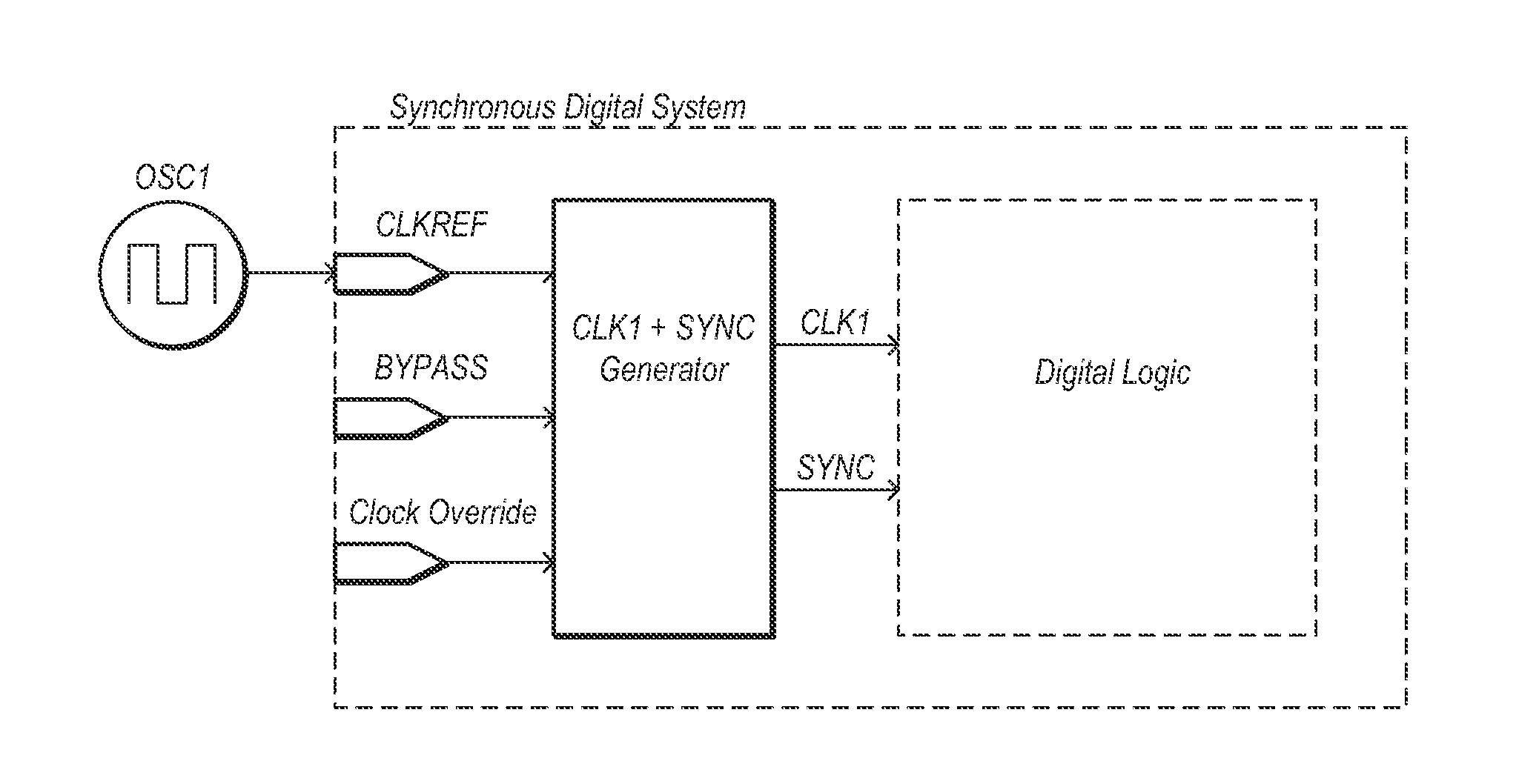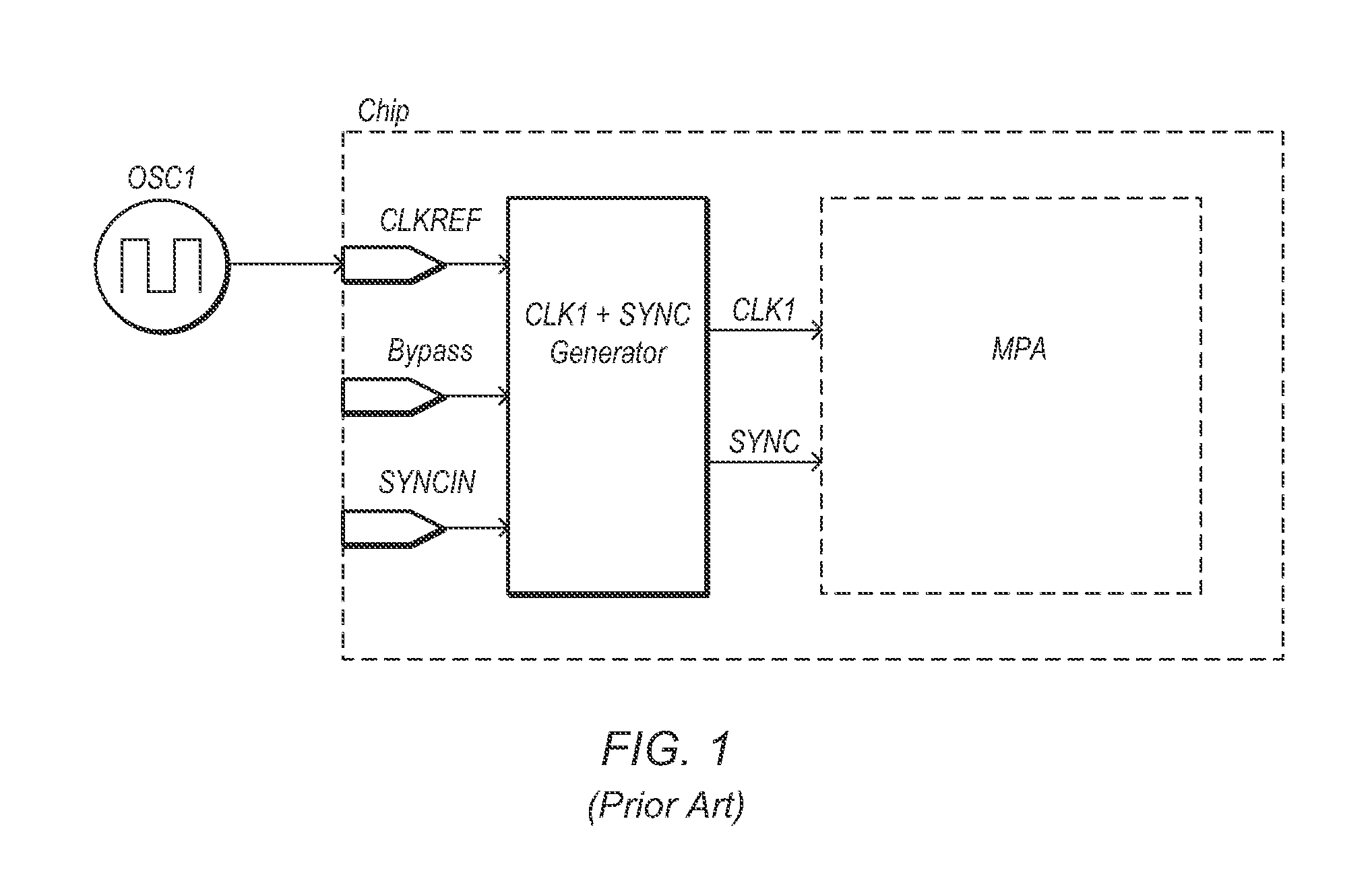Multi-frequency clock skew control for inter-chip communication in synchronous digital systems
- Summary
- Abstract
- Description
- Claims
- Application Information
AI Technical Summary
Benefits of technology
Problems solved by technology
Method used
Image
Examples
Embodiment Construction
[0062]Various embodiments of methods and circuits are disclosed, in which clock and select signals may be distributed throughout a synchronous digital system.
[0063]In one embodiment, a method is disclosed for reconfiguring clock generation circuitry in a clock distribution network of a synchronous digital system. A first clock signal may be generated and selected as a primary clock. A second clock signal may then replace the first clock as the primary clock, without causing clock-induced errors in the synchronous digital system. The clock generation circuitry may then be reconfigured during the time that the second clock signal is acting as the primary clock. The first clock signal may then be selected again as the primary clock, after the clock generation circuitry has stabilized, without causing clock-induced errors in the synchronous digital system.
[0064]In some embodiments, the second clock signal may be an external clock signal. In other embodiments, in which the synchronous di...
PUM
 Login to View More
Login to View More Abstract
Description
Claims
Application Information
 Login to View More
Login to View More - R&D
- Intellectual Property
- Life Sciences
- Materials
- Tech Scout
- Unparalleled Data Quality
- Higher Quality Content
- 60% Fewer Hallucinations
Browse by: Latest US Patents, China's latest patents, Technical Efficacy Thesaurus, Application Domain, Technology Topic, Popular Technical Reports.
© 2025 PatSnap. All rights reserved.Legal|Privacy policy|Modern Slavery Act Transparency Statement|Sitemap|About US| Contact US: help@patsnap.com



